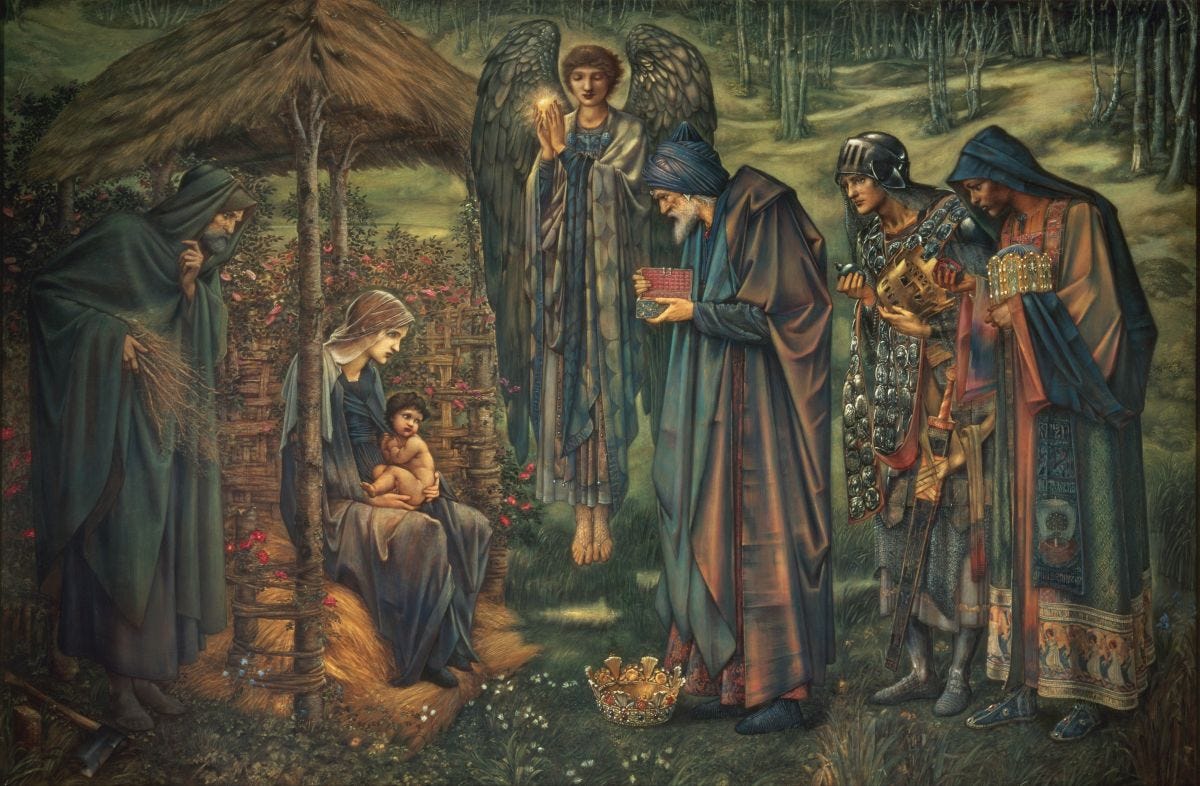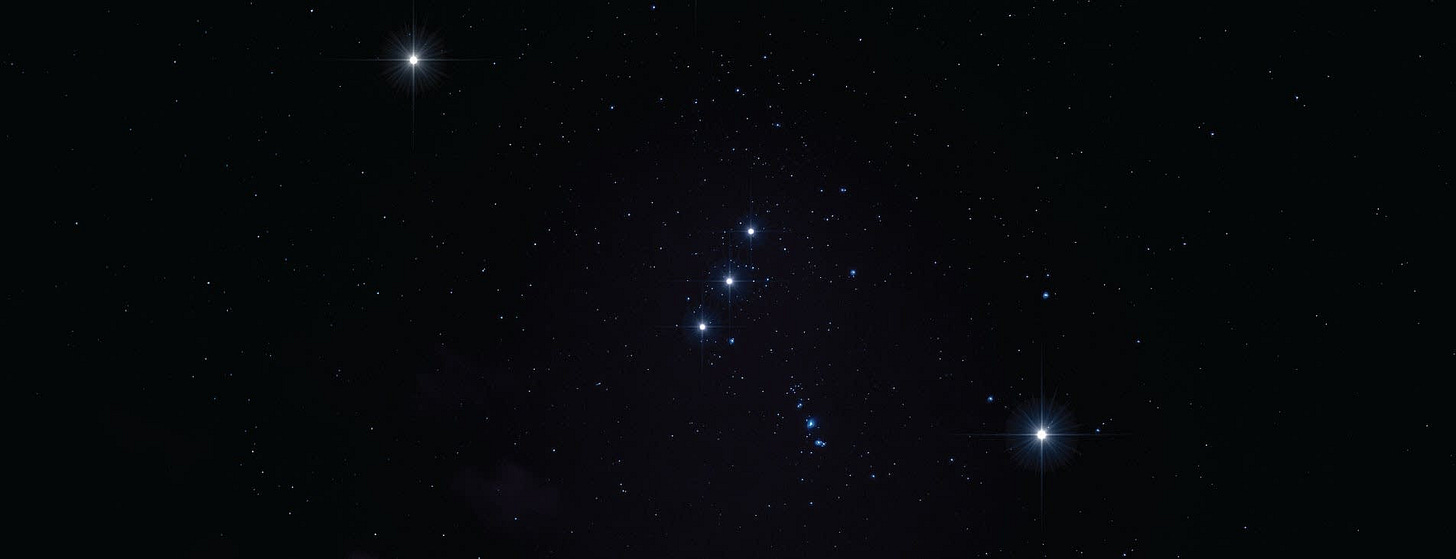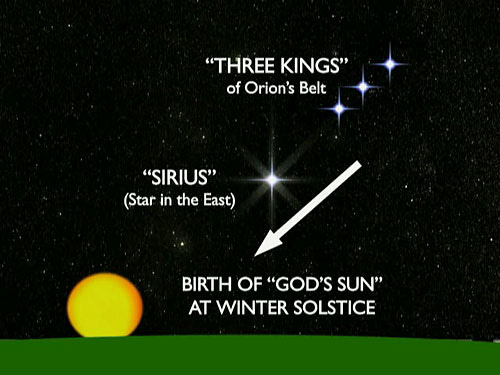The Mystery of the Magi
On the Day of the Epiphany, aka Little Christmas, or the Twelfth Day of Christmas, the "3 Kings" are central figures to this tale about the Star of Bethlehem. From the Magi to the Megalithic Yard.
(This was intended to be published the morning of Jan. 6)
This day has somehow held a great deal of significance for me. First, when my daughter arrived at her first Christmas I felt compelled to integrate the 12 Days of Christmas by gifting her something each of the 12 days, beginning with Christmas day, whether some fruit, a little trinket or toy or something warm to wear for our time in the snow. I felt a need to develop this tradition in acknowledgement of this period of time.
“The hopes and fears of all the years…”
This line from O’ Little Town of Bethlehem speaks volumes to me about this time of year, if not also the heart of our current epoch at this very moment (if not also, my life). A culmination of all that is hoped for, all that is feared (both greatness and failure) swirling about within us as the Light emerges from the Darkness.
Behold,… oneself.
The word Magi has captivated me for many years. Reading various esoteric works about the worlds ancient religions, its ascetic sects, and the priestly classes of ancient times, particularly of the Fertile Crescent I learned more than I had in my Catholic upbringing about this word.
Magi would be of the Persian empire (thus, Zorasters, or followers of Zarathustra), and highly adept astronomers and astrologers. This phenomenon of following the stars (planets were called “wandering stars” in ancient times) through continued observation - with both the naked eye and sophisticated lenses - can be found throughout the world in ancient times going back millennia. Our greatest architectural masterpieces from the sublime to the extravagant are all testaments to this by their placement and orientation.
Roughly 1500 years ago a number of world religions, so to speak, began emerging from the Middle East to China. Zoroastrianism was the first to emerge, in Babylon. Judaism has drawn a great deal from Zoroastrianism, just as Christianity has drawn a great deal from Judaism.
Zoraster is said to have been born of a virgin and at age 30 received a vision while at a religious festival along a river and was taught about Ahura Mazda (“Lord Wisdom”). Here he received the inspiration to preach to the people about following Ahura Mazda and how to combat evil. Core of Zorastrian teachings is good (truth) vs. evil (lies).
Graham Hancock has referenced information in the scripture of Ahura Mazda which details how cataclysmic destruction, brought about during the Younger Dryas epoch, has tremendously altered our world and could have entirely wiped out civilizations, technologies, and living systems. These scriptures also speak of the ones who brought forth wisdom across the world post-global cataclysm.
The Magi would be consider men of knowledge who would have worked with the natural elements and the spirit through the power of the mind. This is likely where the words ‘magician’, and possibly, ‘imagine’, derive from. Their primal deity, Ahura Mazda, or ‘Lord of Wisdom’, is believed to be in continuous battle with the evil force of the world, Angra Mainyu (Ahriman is the personification of this destructive force - I’d imagine Tolkien knew about this as well).
Interestingly, the Tohono O’dham word for healer, or ‘medicine person’, is makai (probably misspelled). The ‘k’ and ‘g’ are often interchanged across the world to evoke the same, or a very similar sound. Additionally, there are older works showing that the Papago, or O’dham peoples, emigrated to Southwestern North America from North Africa. I’m not aware of any O’dham people who proclaim this but it is an old idea that has been substantiated through linguistics, I believe.
But what is commonly believed, and relevant to the Epiphany, is that the Magi came out of Bablyon in search of the newborn King of the Jews, bearing gifts - gold, frankincense & myrrh. It is rather interesting that two plant substance, frankincense and myrrh (both resin-producing plants of the Burseraceae; our native Sonoran desert Burseraceae, Bursera microphylla, was once prized as an incense, known as copál, by the emigrating Catholic priests of the 17th-20th centuries), are prized alongside gold.
I’ve written about the belt stars of Orion in a previous post highlighting their significance along my journey of researching and rediscovering connections with my family name. So this is a particular interest of mine, but not less interesting to continue finding, or re-discovering, a multitude of connections to this famous (or infamous?) constellation relating to cultures, modern and ancient, northern and southern, eastern and western - more on this to come.
Something I only alluded to in the previous post (Ancestral Heritage, A Journey of Discovery, Part 2) is that the 3 belt stars of Orion are also known as “the 3 Kings”.
If one is to watch the eastern horizon through the autumn season, the dawning of Orion’s belt (aka, Slatanrí, “the king’s sceptre”) is a prominent, nearly vertical feature roughly due East followed by the brightest star visible from Earth, Sirius, the Dog Star. (“A sceptre shall rise out of Israel.” [Numbers 24:17])
The orientation of the belt stars is nearly in a straight line. Following this line with one’s eye takes one slightly to the right of Sirius (it’s not quite a straight line). Now continue to follow this trajectory all the way to the horizon…
If one were to continue to watch this point on the horizon (the line created from the belt stars, through Sirius), and wait for the sun to rise, one would see the sun rising at this point… on the winter solstice.
“We 3 kings from Orient are, bearing gifts from heaven afar… following yonder star. Star of wonder, star of light, star of royal beauty bright, westward leading, still proceeding…”
To move through this rather quickly…
Thus, are the 3 wise men/magi/kings, who have followed the star in the East upon word of the son to be born, ‘bearing gifts from heaven afar’, not the belt stars of Orion (Slatanrí, in Irish) pointing towards the rising star Sirius (the brightest in our celestial view) to the East, which points to where the sun/son is to be (re)born in the little town of Bethlehem (Beith, or Beth, “birth” in Irish)? For the sun will “stand still” at this point on the horizon for 4 days starting on the 21st of December, then begin its ascent to the north (it is born again) along the horizon on Christmas day. A solar deity is born, annually, on this day and the belt stars of Orion, along with Sirius, point us to the very spot, just as the tales and songs have declared.
(More thoughts on winter/summer solstice, Orion, the Milky Way, etc.)
The Magi, as astronomers, observers of the stars, would have come from Babylon. We have inherited our base 60 system (60 seconds, 60 minutes) from the Babylonians, amongst a great many other things. Did they invent it? or did they receive it from another? That is a larger question than what I can get into here, but suffice to say, it’s an important question that requires some thought.
Turning to the West, I’d like to bring to your attention to the concept of the Megalithic Yard. First identified by Scottish field researcher Alexander Thom in the early 20th century, the Megalithic Yard (MY), at 2.72 ft, was found to be a standard unit of measurement across more than 300 ancient archeological sites in the West of Europe. Other measurements, the Megalithic Fathom, and Megalithic Inch (demonstrated by spiral petroglyphs) were found to be consistent, also. This engineering professor demonstrated that the ancients replicated a standard unit of measurement in their construction of numerous sites over many hundreds of years time.
In the book, Civilization One, by Knight & Butler, they demonstrate how the MY was developed by using the polar circumference of the globe and the number of revolutions of the planet per year (366), thus a second of arc of the polar equator is respectively equal to 366 MY and that this could be accomplished using basic tools and observational astronomy - BUT the knowledge must be present.
This fascinating discovery sheds some possible light on the questions articulated above. As the base 60 system is believed to derive from Babylon, we have a related element of base 60 measurement system in the Megalithic Yard which is derived from the shape of the Earth and its relation to the heavens.
In fact, when one takes the widely accepted polar circumference of the Earth as 40,008 km and converts that to MY (2.72), then divides by 366, then by 60, then by 6, one arrives at 366 MY for one second arc of Earth’s polar circumference. This is a high degree of accuracy in the knowledge of the Earth’s spherical shape and size.
Additionally, Thom’s research showed that the MY was most accurate in the far West, ie. Ireland, Scotland, England, and became less accurate/consistent when moving onto mainland Europe.
So did these ancient architect’s originate in the West and bring their knowledge Eastward??
To wrap up this somewhat brief but widely traversed post, I’d like to share some numerology from the Hebrew language (all letters in Hebrew have a numerical value). And, I’d briefly like to note, that Iberiu is one of the ancient names of Ireland and there are a great many words that translate directly from Old Irish to Hebrew.
In Hebrew, the numerical value of “Gold, Frankincense & Myrrh” is 359.
December 25 is the 359th day of the year.
Aramiac word, Meshia (sp?), is valued at 359 in Hebrew (“messiah”).
Once again, the standardized Megalithic Yard, which is derived from the polar circumference of the Earth, at 366 minutes of arc, is closely related to the Babylonian system of base 60 which gives us our hours (or Horus - another crucified and resurrected savior out of Egypt - a solar deity) and minutes today.
I hope you don’t mind the wild runnings of my mind on this subject. I don’t feel this is a concise and closed subject but a fascinating exploration (for me, anyway) of various related pieces from our religious, cosmological, and ancestral past that leave us clues as to who we are, where we’ve come from, and perhaps, why we are here.
Ultimately, it’s about perceiving the natural world around us with an open mind, open heart, and an ear to the voice of the spirit.
Go leor beannachtaí san athbhliain!
Manny Blessings in the New Year!










So fascinating! I especially enjoy the Orion's belt, + Sirius + Sun correlations ~ recently moved to a region where I have more access to view the stars, it's been such a treat learning more about our night sky! Thank you for sharing your meanderings :)